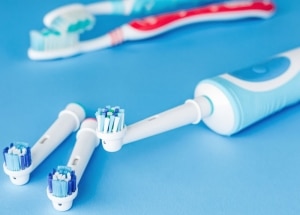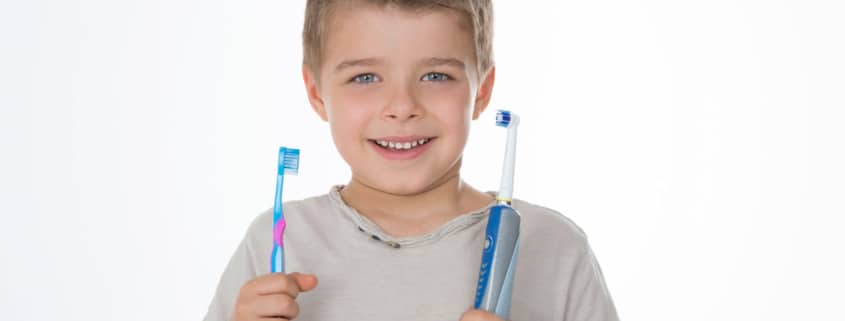Electric vs. Manual Brush, Which Should I Use?
A common question patients asks dentists is in regards of electric vs. manual brush, “which should I use?”. There may not be a right or wrong answer because it all depends on each person’s specific preferences and necessities.
When it comes to picking between an electric toothbrush and a manual toothbrush, it’s best to look at the differences between them.
Electric toothbrush vs. manual toothbrush
 Electric toothbrush bristles vibrate and rotate to help remove plaque buildup from the teeth and gums. This vibration allows for more micromovements when brushing your teeth, making them slightly more effective at removing plaque and gingivitis.
Electric toothbrush bristles vibrate and rotate to help remove plaque buildup from the teeth and gums. This vibration allows for more micromovements when brushing your teeth, making them slightly more effective at removing plaque and gingivitis.
A review of studies showed that in general, plaque can be reduced about 21% after only three months of using an electric toothbrush vs a manual toothbrush.
Since electric toothbrushes work by rotating and vibrating, they do most of the work for you, an especially great benefit for people with arthritis or other conditions that limit dexterity. However, for people with sensitive teeth and gums, unless they use an electric toothbrush with variable speeds, it can be more difficult to regulate the amount of pressure being applied than when using a manual brush.
For people with orthodontics, electric brushes make brushing teeth easier and kids will probably find an electric brush more interesting than a manual one, therefore feeling more motivated to take care of their teeth.
Many electric toothbrushes also come with a built-in timer that lets you know whether you’re brushing your teeth for the right amount of time (2 minutes) or not. Some also provide guidance in where in your mouth you should be brushing, helping you to achieve a more thorough result.
The main con to electric brushes is their high costs. Prices can range from $15 to $250 per brush. New replacement brush heads usually come in packs and can cost between $10 to $45. Manual toothbrushes, on the other hand, are significantly cheaper and easier to find, since any drugstore or supermarket will carry a variety of them.
If you travel often, you may find a manual toothbrush more convenient, since they’re smaller and easier to pack. If you use a plug-in electric brush when travelling internationally you may need a backup brush.
Both electric and manual brushes will need replacement after three months. For electric brushes, the heads should be replaced and for manual brushes, the full brush should be replaced.
When using the proper technique, both electric and manual brushes are effective at removing plaque and keeping your teeth clean. The main difference between each are the prices and accessibility.






